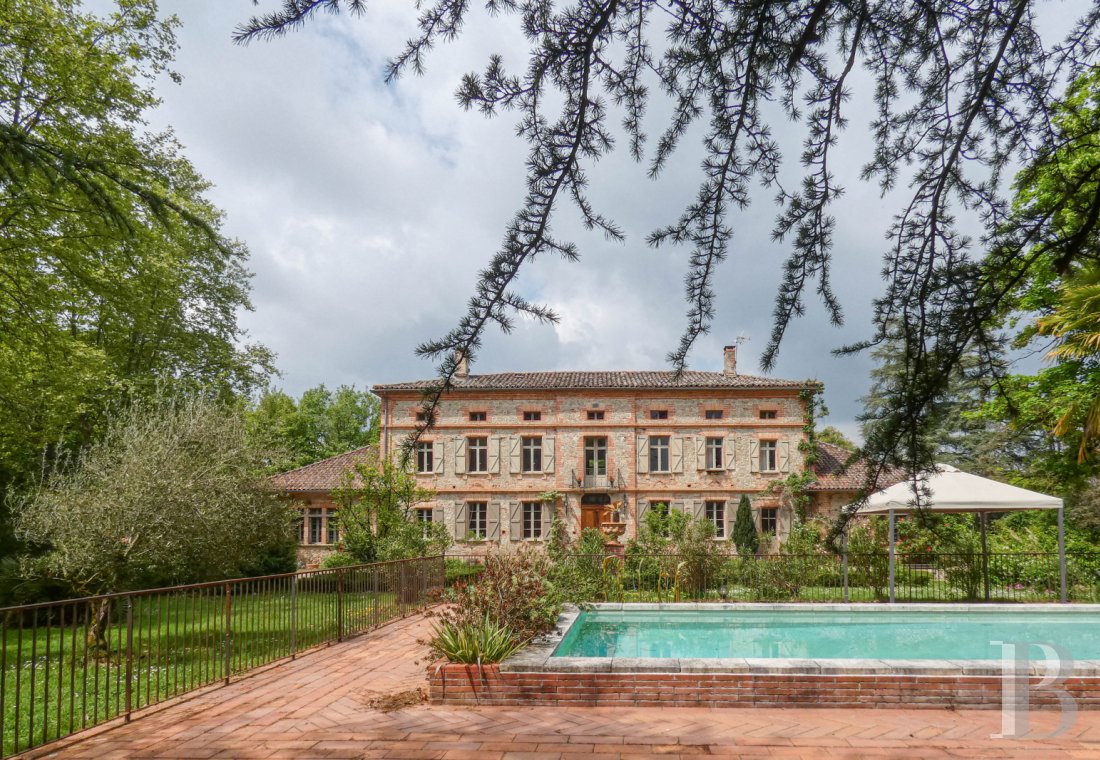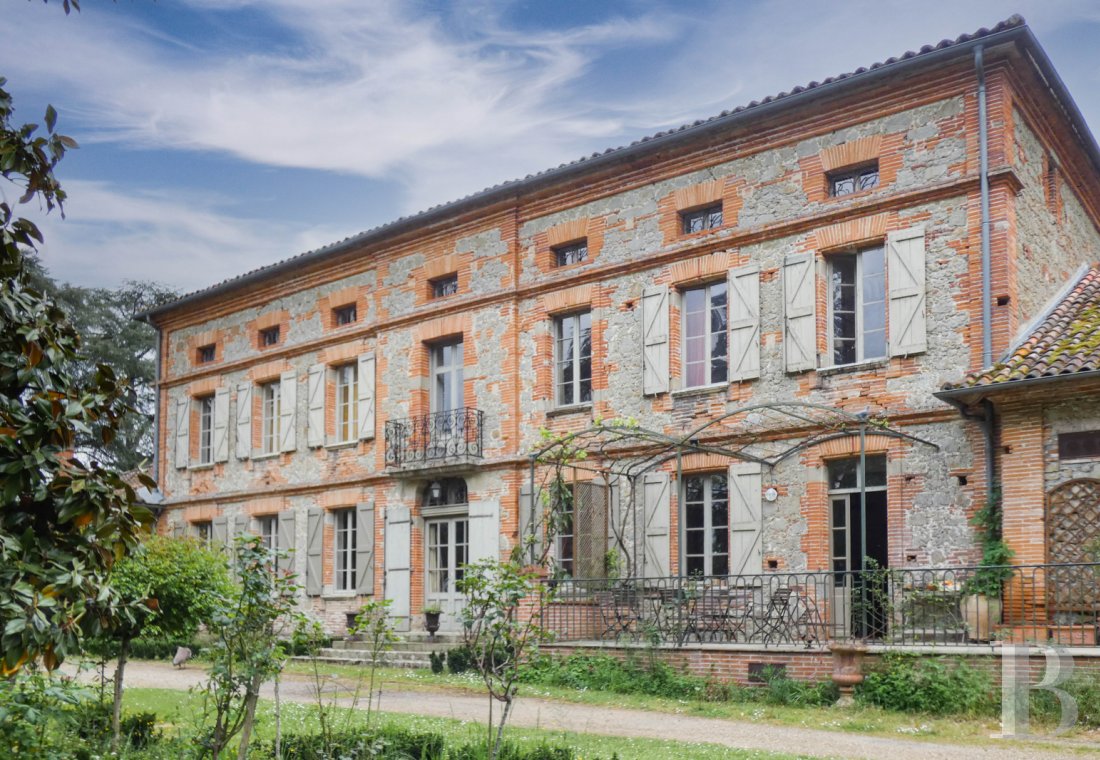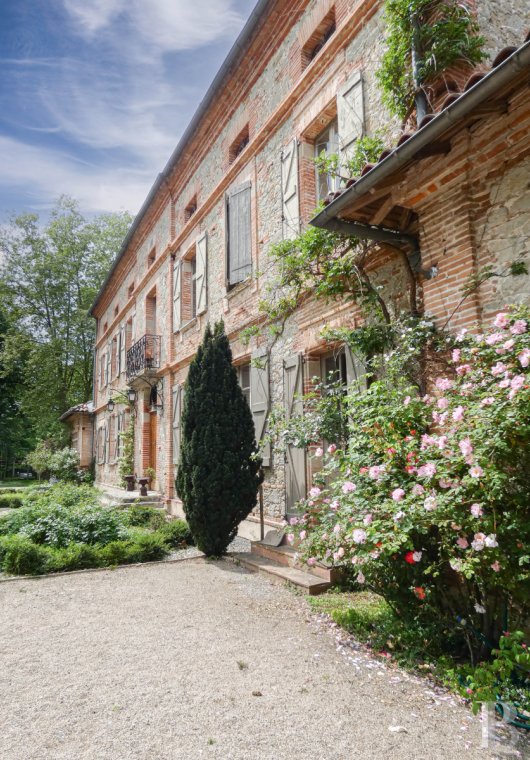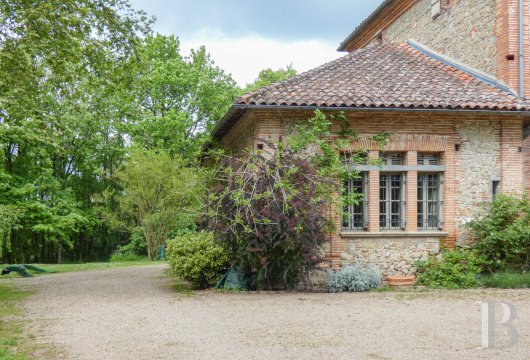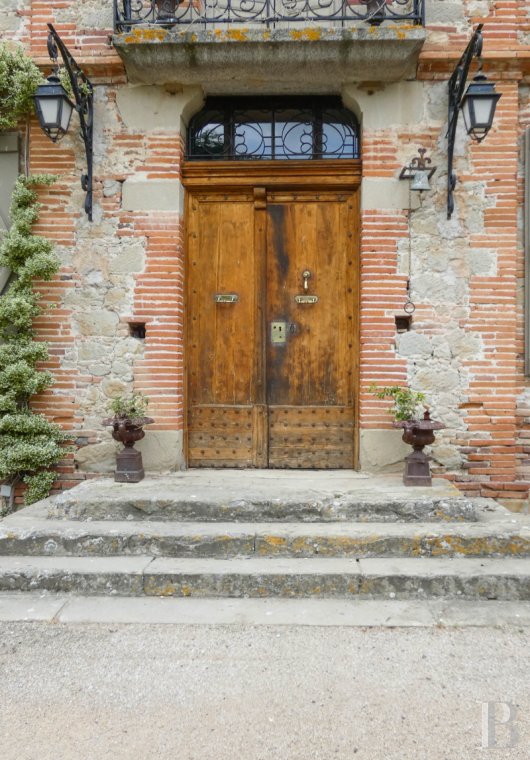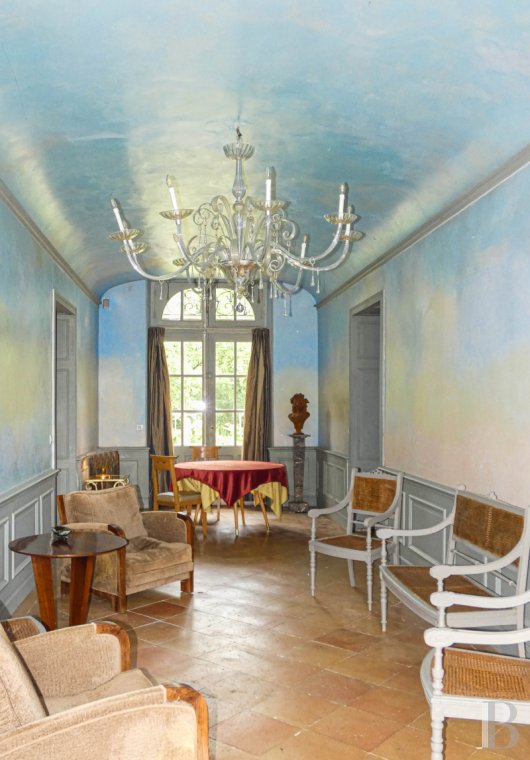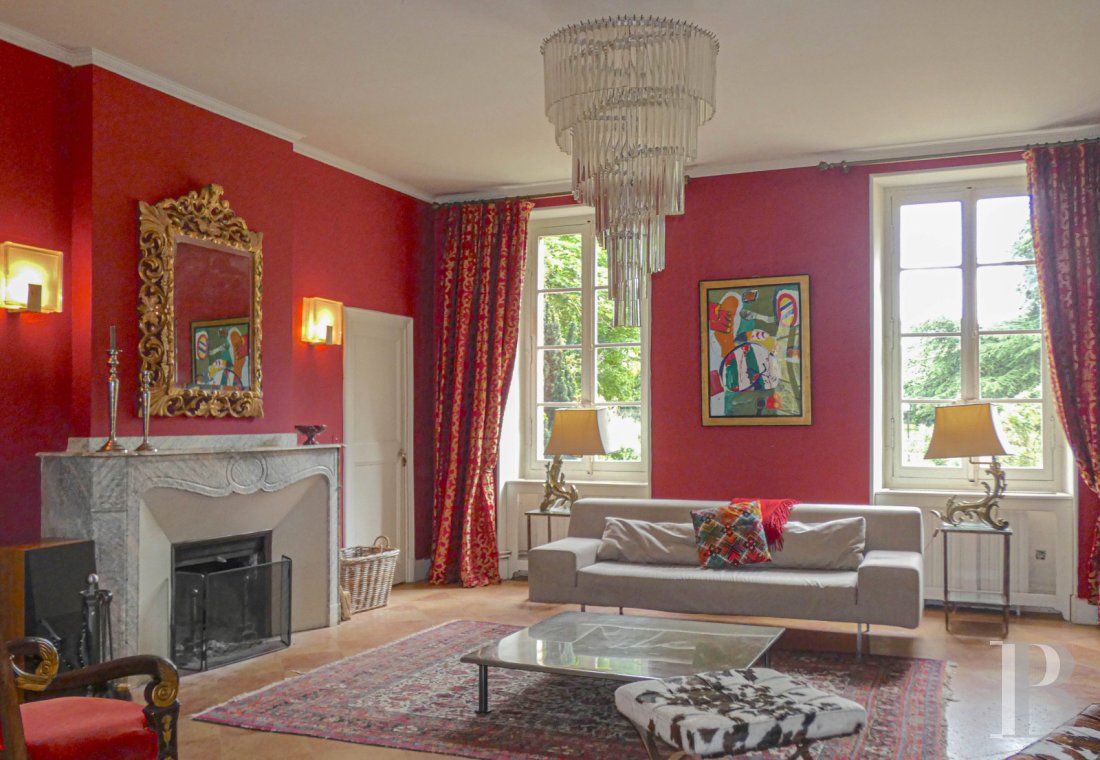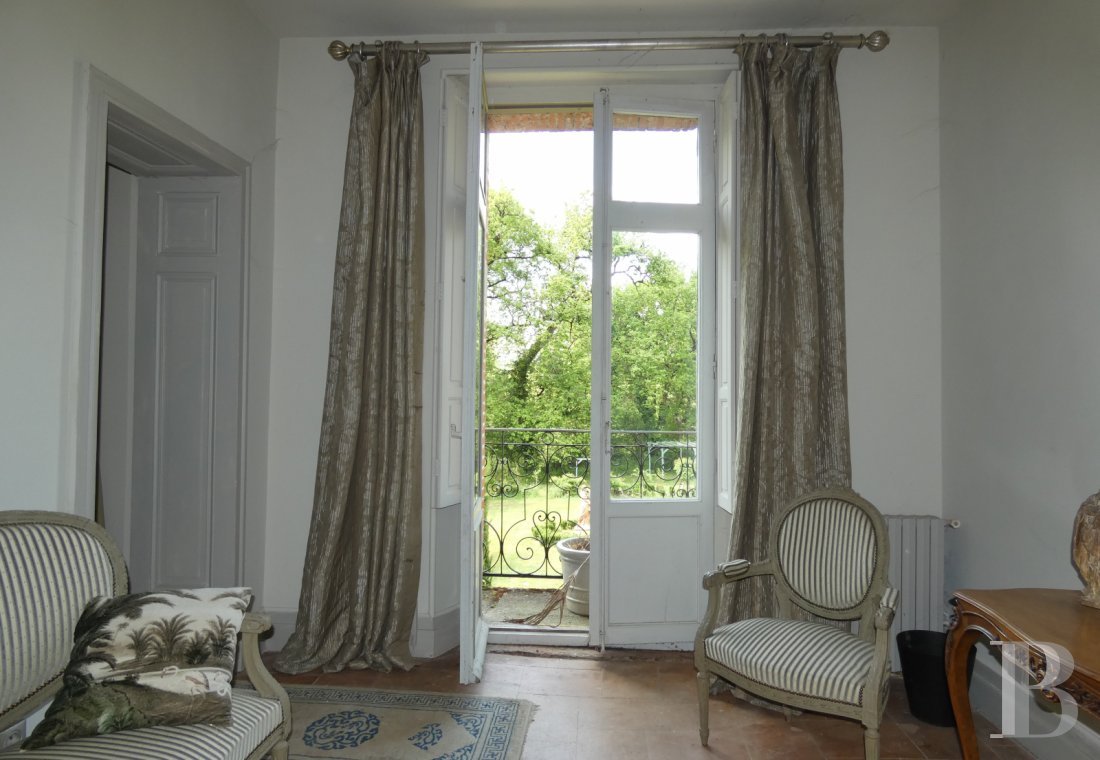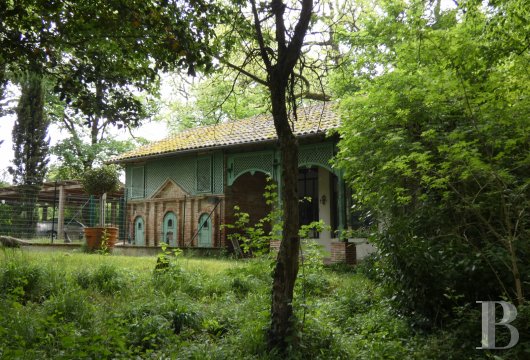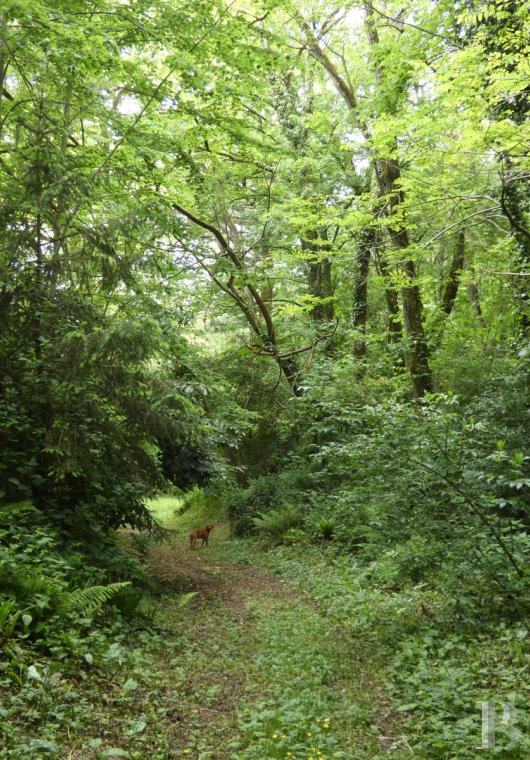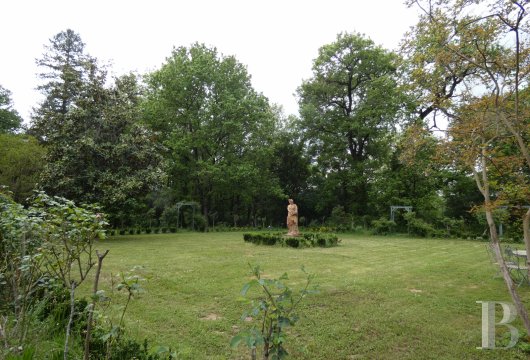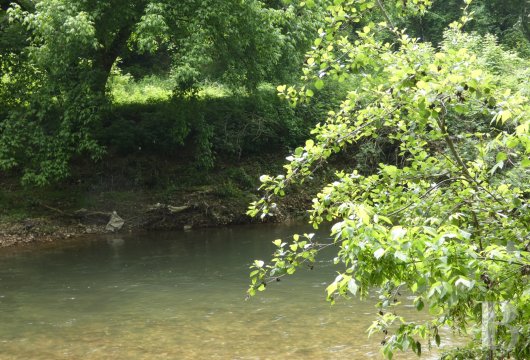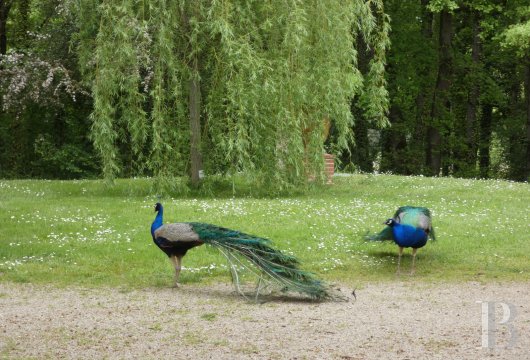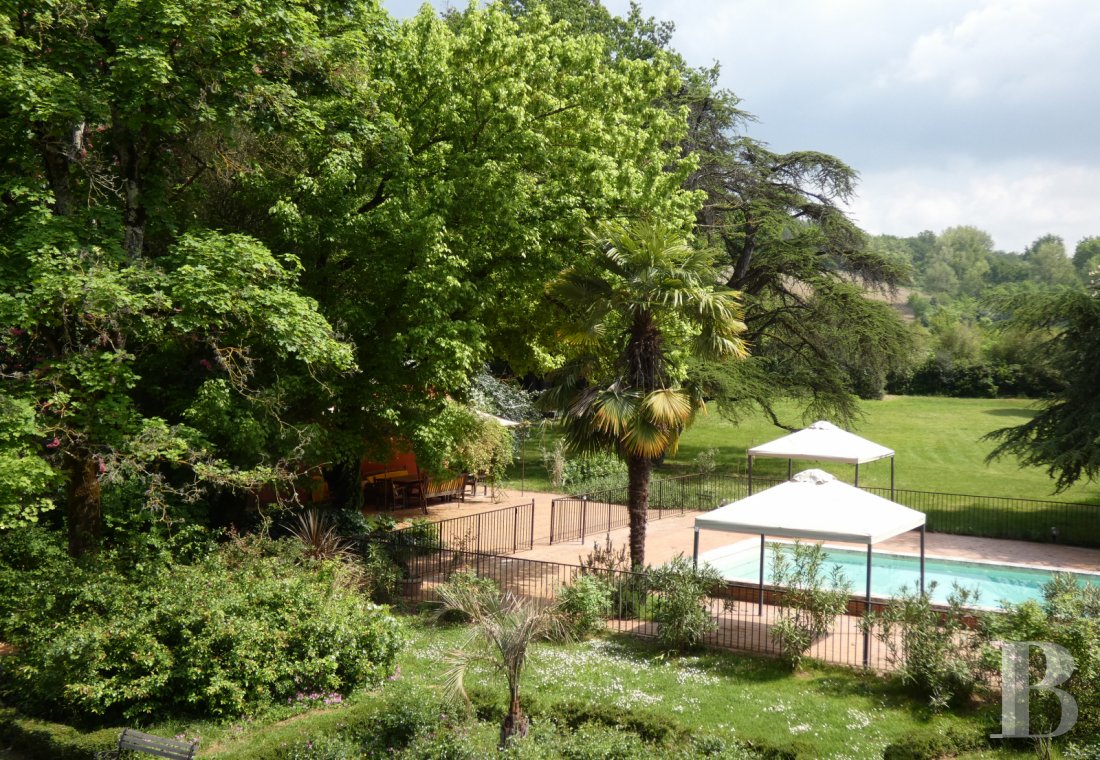Location
In the French department of Tarn, 5 km from Lavaur, a small, very lively town, with 10,000 inhabitants, numerous shops and boutiques as well as a flourishing economy due to the setting up of the head office of a large dermo-cosmetics company. Toulouse-Blagnac airport, reached via the motorway, is 40 km from the house and the towns of Toulouse and Albi are a 30-minute drive away.
Capital of the “Land of Plenty”, the town is part of an area which saw its history and its geography marked from the 15th to the 17th century by the culture of pastel, the blue gold of the Renaissance era, and then by the exportation of cereals that the Canal-du-Midi increased as of the 17th century. It has an outstanding natural heritage: a Natura 2000 site (the Tarn, Aveyron, Viaur, Agout and Gijou valleys) and two Natural Areas of Ecological Interest for Flora and Fauna (known as ZNIEFF for Zones Naturelles d’Intérêt Ecologique, Faunistique et Floristique).
Description
In perfect harmony with the local houses, with its brick and stone walls as well as its Italian-style facade, this large, luxurious home dates from 1853. It blends beautifully in with the landscape, the undulating scenery of which has earned the region its nicknames of “little French Tuscany” and “land of a thousand hills”.
The large, luxurious home
Constructed from brick and stone in the 18th century, this house spans two symmetrical levels, topped with a roof covered in Roman tiles. Its many openings, fitted with solid shutters, are enhanced with brick surrounds that bring the architecture of Toulouse to mind. Two extensions, once terraces, have been converted into living space in keeping with the style of the building, whilst harmoniously and symmetrically extending the building.
A large terrace borders the north facade, facing the parklands with their centuries-old trees.
The ground floor
A vast vestibule, with a vaulted ceiling and old floor tiles, provides access, on the right-hand side, to a large through lounge, with stone floor tiles and a fireplace; one of its walls has been knocked down to create a study-library, opening widely on to the lounge. On the left-hand side of the vestibule is a dining room, with fireplaces, stone floor tiles and red painted walls; two wide openings let copious amounts of light into the room. A corridor leads to a first, colonial-style bedroom and a shower room, followed by a stairway, going up to the first floor. Also on the ground floor, on either side of the building, are two identical extensions: the first houses a large laundry room and cupboards; the second comprises a bedroom, with a bathroom, and a flat, composed of a lounge-kitchen, a shower room and a bedroom.
The first floor
The upper level comprises five bedrooms and two small lounges, the floors of which are covered with old terracotta tiles. Facing one another on either side of the corridor, these bedrooms each have a balcony, enhanced with wrought iron railings. The first-floor ceilings are of a good height; the bedrooms are spacious and one of them has its own shower room. Another two, separate and very bright bathrooms have extensive views over the parklands.
The second floor
Once through the access door, the spaciousness of this level creates a spectacular effect: it was designed to receive guests and is, consequently, very easy to move between each of the lateral spaces, all of which open on to a wide, central area, constituting the backbone of the floor. A lounge, a kitchen and bedrooms are laid out on either side of this area; pillars are composed of Toulouse brick, floors are laid with parquet flooring or terracotta tiles and the layout of the beams enhances the depth of the rooms as do the low windows opening under the eaves. At the end of this level is a separate section, concealed behind a door. It comprises a bedroom, with a large shower room, and, on the other side of the central area, a second, separate shower room and a bedroom, with a sloping ceiling. The floor’s various authentic, first-class materials have been meticulously restored and provide unique character to all the rooms laid out under the roof.
The art studio and the outbuilding
Rising up out of the dense verdant vegetation amidst centuries-old trees, this art studio stands set somewhat back with a brick and stone facade; covered with diamond-shaped, wooden trellising, forming three offset arches. Said facade features two windows and a glazed door set back under a canopy protruding from the facade. Its only room, filled with abundant light, naturally lends itself to the development of an artistic activity involving painting or sculpture.
Some fifty metres from the building, an outbuilding has furthermore been designed for holding weddings. It comprises a vast function room, a professional kitchen and toilets. A marquee is currently erected around it so that it is able to take large events.
The parklands, the woods and the fields
Extending over 6 ha, these Italianate parklands surround the large, luxurious home with its many trees, hundreds of years old. In the centre, in front of the house, a swimming pool bordered with stone and brick is reminiscent of 18th century Italian leisure pools.
Dominating the Dadou, a second category river abounding predominantly in coarse fish, these wooded parklands offer a multitude of shady areas, planted with miscellaneous species: a rare sequoia and oak trees, one of which is over two hundred years old; lawns dotted with wild cyclamens, a banana plant and a palm tree giving the pool a hint of exoticism, lilac bushes, fig trees and a large rose garden with its various perfumes. Near to the art studio, behind the main building, a little pathway crossing a wood gives access to the river, a haven of peace which is often used for family picnics in the summer months.
Adjoining the parklands, a large orchard planted with cherry, apple, pear, almond, plum and a few olive trees, adds a cheerful diversity to this wooded area.
And lastly, the surrounding fields, once planted with vines, are now used for growing cereal crops. Furthermore, a little shady pathway, crossed by a freshwater pond much-appreciated by frogs and herons in the summer, leads down the hillside to the river.
Our opinion
Rich in colour creating harmonious contrasts between the eras and between the buildings, with their wooded setting, this property offers great appeal courtesy of its centuries-old charm and its pleasant atmosphere. Its various trees, hundreds of years old, make this an outstanding and majestic place. Its ideal location, in the midst of the countryside but not far from a bustling town, can but enhance the many ways of life to be had here. The wealth of possibilities includes a countrified holiday home or a place for creative contemplation or even for holding festive events as well as joyous social gatherings. And of the many colourful possibilities, it is perhaps the peacocks in the vast parklands that give the most immediately delightful as well as the most naturally poetic and liveliest image, making a promise that Prévert described as follows: “Peacocks make a wheel, fortune takes care of the rest”.
1 995 000 €
Fees at the Vendor’s expense
Reference 106012
| Land registry surface area | 6 ha |
| Main building surface area | 750 m2 |
| Number of bedrooms | 10 |
| Outbuilding surface area | 400 m2 |
French Energy Performance Diagnosis
NB: The above information is not only the result of our visit to the property; it is also based on information provided by the current owner. It is by no means comprehensive or strictly accurate especially where surface areas and construction dates are concerned. We cannot, therefore, be held liable for any misrepresentation.


